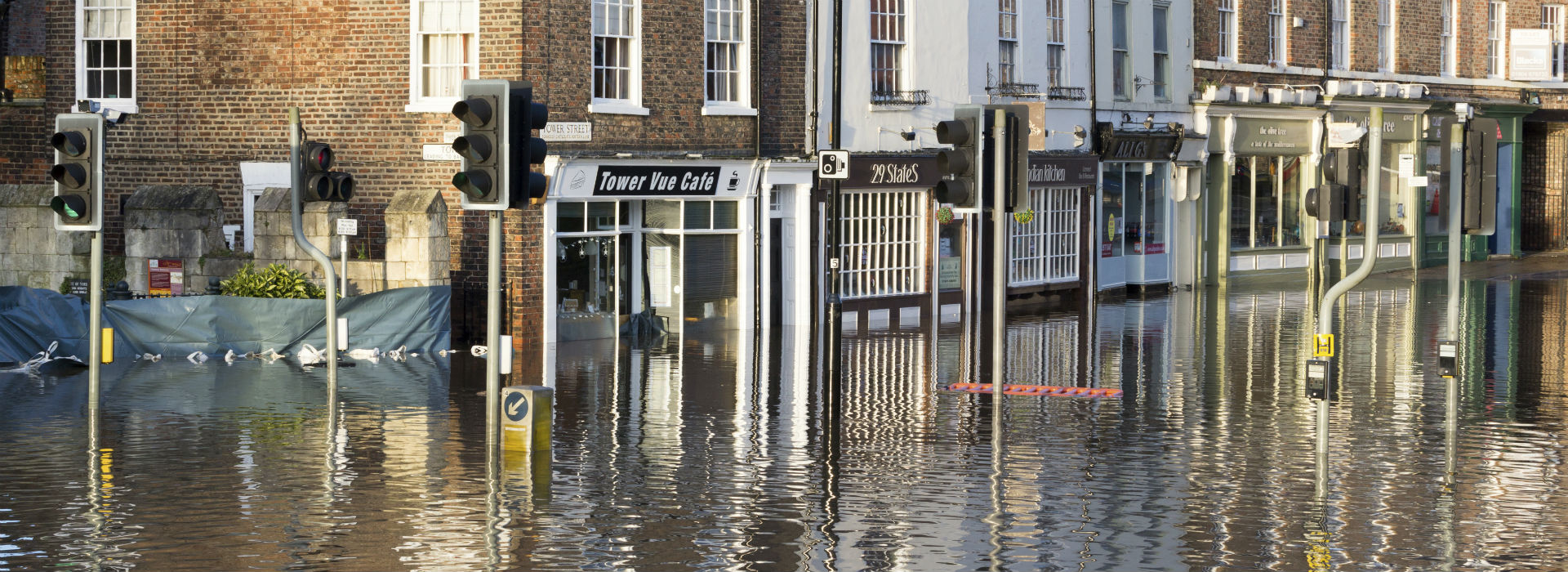The water levels brought about by storms Desmond, Frank and Eva throughout December 2015 and January 2016 may have subsided, but they have left their mark on the insurance industry.
Flood insurance statement of principle, first introduced in 2000 in response to heightened flood risks, has now become an unsustainable form of protection for insurance providers, and simply unattainable for those living in a high flood risk area.
In response, the UK Government and the Association of British Insurers (ABI) agreed on the proposition for Flood Reinsurance, or Flood Re – a not-for-profit scheme which hopes to get the home insurance market in the worst hit areas flowing once again.
The scheme, which will be funded through a levy paid by insurers, equivalent to 2.2% of each policy premium arranged, will absorb the hypothetical costs associated with properties in a flood risk area.
What this means for the policy holder, is that their insurance will still be based on key aspects of their property, but as the likelihood of flooding is taken out of the equation, their home insurance is feasible and sustainable.
For the insurers, it means they can continue to sell insurance to those in the most vulnerable areas of the country. If these properties are hit by a flood, the clean up and damage costs will then be covered by the reserves set aside within the Flood Re scheme.
Sean McClarron, Director of McClarrons, welcomed the initiative, which is due to come into effect in April 2016,
“The scheme works both in favour of the policy holder and the insurance provider. While the cost of the scheme is still covered by the insurer, this is minimal compared with large settlements as a result of flooding, or not being in a position to support homes and businesses in the first place because the risk is just too high.”
There will be exclusions, including properties built after 2009, to discourage opportunist building on flood plains and commercial premises. Those who own buy-to-let properties will also be excluded, which means while the contents of private tenants can be covered for flood damage, the building that they live in will not be.
Commercial properties will still have the advantages that using an independent broker brings, such as access to niche policies and closer analysis of what is needed within their business insurance. But there is an opportunity for insurance brokers and their personal clients through the scheme too, as Mr McClarron explained,
“We have many home insurance clients who live in York, which was one of the worst hit areas in the country. Without the Flood Re scheme, they would have inevitably seen a big rise in their premium, despite the best efforts of our team. But because the scheme is designed to allow insurers to remove this risk factor, they can look forward to a premium that remains competitively priced.”
Flood Reinsurance, which has been dubbed “Flood Re”, is a not-for-profit initiative which will be activated in April to help homeowners and private tenants acquire the insurance policy they need, without insurers being lumbered with a policy which may land them in financial difficulties themselves.
About Flood Re
Quite simply, Flood Re is a pool of funding which will be made available to between 200,000 and half a million homes in high risk flood areas
The logistics
What this reserve means is that insurers are able to effectively “dismiss” the higher risks associated with a particular property, so that they can search for a home insurance premium which remains competitive with properties in a low risk area. If these properties are then affected by severe flooding, Flood Re will absorb the costs associated with repairing damage and replacing contents.
The winners
The scheme works to protect both the policyholder and the insurer. Those who were finding that their home or contents insurance was either unaffordable or virtually impossible, will be able to enjoy the same competitive rates as though they are not in a high flood risk area. In turn insurers will be able to take on the business of these clients without the financial risk posed by inevitable flooding.
The funding
The initial £10 million set up fee will come from the insurance industry. Any shortfall between the estimated cost of flood damage and premiums paid will be covered by a levy of £180m per year from insurers, a sum which equates to 2.2% of each premium per household.
Scheme specifics
Properties built after 2009 will be exempt from the scheme, so as to discourage home-building companies taking advantage of the funding by building on flood plains or other areas that are known to flood.
The scheme only applies to residential properties. This is under the assumption that most commercial properties would already benefit from the advice of an insurance broker whose job it is to find a suitable policy within their budget.
Buy to let property owners will also be excluded from the scheme, though private tenants are eligible for contents insurance policies that incorporate Flood Re, even if the building they inhabit, such as a block of flats, isn’t.
In short, what Flood Re means for you
As a broker: The implementation of Flood Re will help brokers find solutions for personal insurance customers in flood risk areas. Through the scheme they will be able to widen their personal lines insurance offering, as home insurance policies which are not going to cover them before April will suddenly become available to them once again.
As an insurer: At a cost relatively low to a home insurance premium, insurers are able to offer flood insurance as part of the policy, without the flood risk impacting on their business. The home insurance market as a result, can enjoy the same buoyancy as in previous years, before severe floods become a common problem in certain areas of the country.
As a homeowner or tenant: While the introduction of Flood Re can’t help prevent flooding damaging your possessions and prevent your home from becoming uninhabitable, it does mean that you will be able to secure home insurance at a rate synonymous with other areas which aren’t in flood prone areas. With the right policy in place, one which is within your budget, the costs of floods will at least be covered.
























